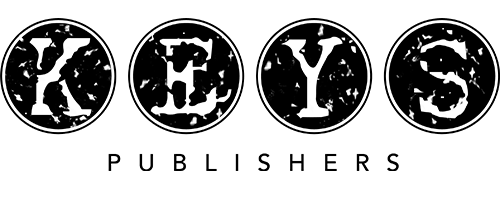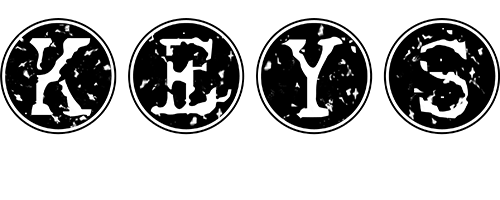
13 Nov 6 Essential Steps to Self Publishing Your Book
The average person can now self-publish their formalized thoughts in a few steps. They can combine their own resources with creativity, determination, and technology to accomplish virtually anything. It is a testament to human innovation and the concept of decentralization. Writers and other creatives that self-publish have full creative control over their ideas and the audience(s) they are targeted to. Those who choose to self-publish also have the benefit of creating their own project timelines. The effort of the self publisher is directly tied to the success of the project, so our aim is to be the best self publishing resource there is. For those who wish to go down this path, I’ve outlined the 6 Essential Steps to Self Publishing.
Step 1 – Vision and Mission Statement
Vision
I’m not sure that there is enough attention given to this 2-pronged step. Every self-publishing author needs a solid vision and mission for their project. I define the vision as how the project owner(s) foresee every aspect of the results of the project. This can be measured in things like copies sold, gross revenue, size of following, and reviews. It’s important to have reliable tools to track these metrics and to document the vision prior to taking action.
Mission Statement
The self-publisher’s mission statement should clearly define what the author is setting out to achieve through their art. Project members should avoid diverting from their vision and mission statement. The reason for the rigid adherence is because both will serve as a reference or guidebook during difficult decision points. They also give you the ability to evaluate your success and to do things exactly the way you set out to.
Step 2 – Manuscript
You need a completed and copyrighted manuscript in order to publish. The copyrighting is a necessary nuisance, even though multiple sources will claim that it isn’t obligatory. Right now it’s still a standardized, universally recognized way of registering your work as yours. It gives you the right to tell someone to pull something down that appears to closely resemble your work, even though it doesn’t cover the legal fees you may incur trying to do so. As it stands you need copyright registration if you are to sell your work via major retail channels.
Step 3 – Editing
As an author, you are promoting and selling your command of the written English word, so you have to come correct! Editing using a standardized guide like the Chicago Style guide will ensure that your project meets accepted literary standards and is easier to read. You can do this task yourself, or delegate a trained editor to perform the multiple layers of editing.
Step 4 – Creative Design and Layout
High quality creative design is key to the overall look and marketability of your printed book or ebook. Eye catching design and readability can be the difference between two similarly themed and priced projects. Professional creative designers understand that illegible typeface or busy layouts stress the eyes and decreases readability. Note that creative design is separate from illustration services, but the designer eventually merges all aspects of the project into the final product that the public sees.
Step 5 – Marketing
Marketing is the least glamorous aspect of self publishing. It is the single most important aspect of self publishing other than creating the actual manuscript itself! Marketing consists of identifying an audience who would value your project and trust you enough to purchase it when the time comes. It involves building a loyal following who anticipate your next post, tweet, and of course your next project. This takes a tremendous amount of time and effort, and like many of the other critical steps above – if you can find an expert to delegate this task to, YOU SHOULD.
Step 6 – Distribution
Self publishers should put serious thought into their distribution channels and strategy. Think about how the channels relate to the core audience you have chosen – do your fans prefer to use amazon.com or local indie shops? Do they prefer a digital version or hard copy? Would they navigate through a less popular website that you put together to purchase your project? Are they varied or indifferent in their preferences? It’s worth the time to investigate every channel for this reason. Depending on costs, consumer preference, or the level of effort it takes to distribute through a particular channel, you may choose one or several. Also note that choosing the right formats such as Print (hard/soft cover or board book), ebooks, and audiobooks is important to your project’s success. The vision and mission statement you created earlier should help with any tough decisions that come up along the way.
Conclusion
It’s important to note that some of these steps are rate limiting, and others are not. Other factors to consider include a budget, and key roles to employ (like a coach or publishing team). With confidence, ambition, and resilience, you could transform yourself from ordinary citizen to a best selling author.


Abdulrazak Aralimatti
Posted at 22:51h, 25 NovemberUseful
Kwesi Legesse
Posted at 18:24h, 27 NovemberGratitude!
Steve Mario
Posted at 05:19h, 10 FebruaryGreat advice and how do I come in contact with an expert in book marketing.
Kwesi Legesse
Posted at 12:52h, 04 MarchHi Steve, we are fortunate to live in a decentralized, tech-driven world where freelancers are in abundance. Sites like fiver may have freelance marketers who could assist in your endeavor. Even social media outlets like FB and IG feature folks who are promoting their own brands that happen to market others. Marketing and sales is a huge part of any independent business endeavor, so choose wisely!